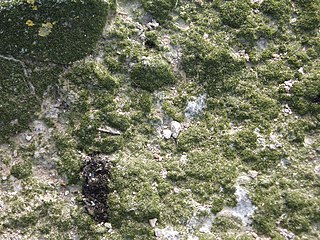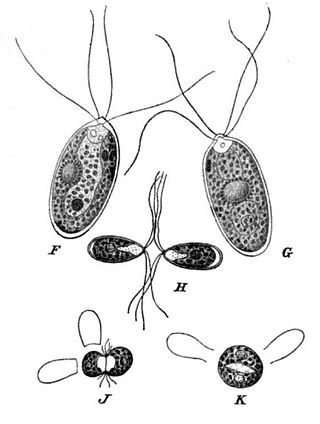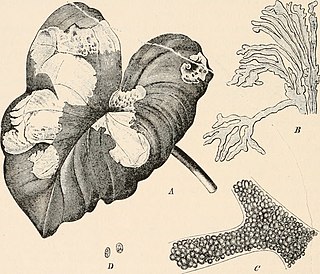
The Trebouxiophyceae are a class of green algae, in the division Chlorophyta. Their circumscription within the green algae is not well established due to the need for more genetic studies at higher levels within the group.

Microthamniaceae is a family of green algae in the class Trebouxiophyceae. It is the only family in the order Microthamniales.

Prasiolales is an order of green algae in the class Trebouxiophyceae.

Chlorellaceae are a family of green algae in the order Chlorellales.

Coccomyxaceae is a family of algae, in the class Trebouxiophyceae.

Selenastraceae is a family of green algae in the order Sphaeropleales. Members of this family are common components of the phytoplankton in freshwater habitats worldwide. A few species have been found in brackish and marine habitats, such as in the Baltic Sea.

Botryococcus is a genus of green algae. It is a microscopic or semi-microscopic alga that is found in freshwater habitats worldwide. It consists of colonies of cells in an irregular, gelatinous matrix.

Carteria is a genus of green algae in the family Chlamydomonadaceae. Carteria are similar in morphology to the common genus Chlamydomonas and differ by having four, rather than two, flagella at the vegetative stage.

Chloromonas is a genus of green algae in the family Chlamydomonadaceae. It is closely related to the model green algae, Chlamydomonas, and traditionally has been distinguished mainly through the absence of a pyrenoid.
Dictyochloris is a genus of green algae in the class Chlorophyceae. It is the sole genus of the family Dictyochloridaceae. It is commonly found in terrestrial and subaerial habitats.

Dictyosphaerium is a genus of green algae, in the family Chlorellaceae. It occurs in freshwater habitats around the world and is planktonic. The name comes from the Greek roots diktyon, meaning "net", and sphaira, meaning "ball", referring to its morphology.

Lagerheimia is a genus of green algae in the family Oocystaceae. It is commonly found in freshwater habitats all over the world, although some species are rare and have only been recorded from Europe or the United States.
Marsupiomonas is a genus of green algae, containing a single species Marsupiomonas pelliculata.

Microthamnion is a genus of green algae in the family Microthamniaceae. It is found in freshwater habitats around the world, preferably with low levels of pollution; it is typically attached to solid substrates.

Prototheca is a genus of algae in the family Chlorellaceae. While this genus is a member of the green algae, all Prototheca no longer have chloroplasts and therefore their photosynthetic ability. Some species can cause protothecosis in humans and various vertebrates.

Tetrastrum is a genus of green algae (Chlorophyta). It is a common component of the phytoplankton of freshwater habitats, particularly eutrophic and alkaline waters.

Phyllosiphon is a genus of green algae in the class Trebouxiophyceae. Unusually among the green algae, members of Phyllosiphon are often parasitic within the leaves of Araceae, causing necrosis. It has a mostly tropical to subtropical distribution, and is found primarily in the Mediterranean region, but has also been isolated in North America, Australia, Africa, and China.

Dictyosphaerium pulchellum is a species of freshwater green algae, in the family Chlorellaceae.














